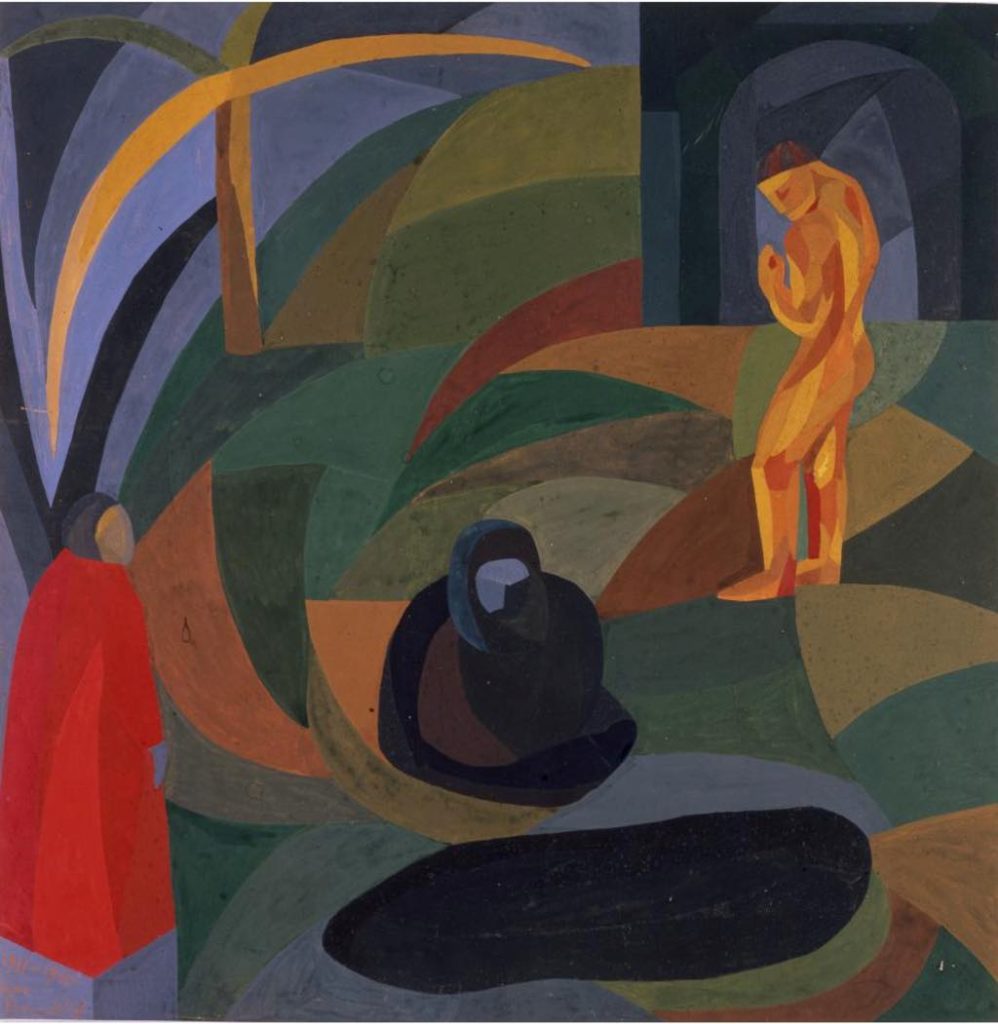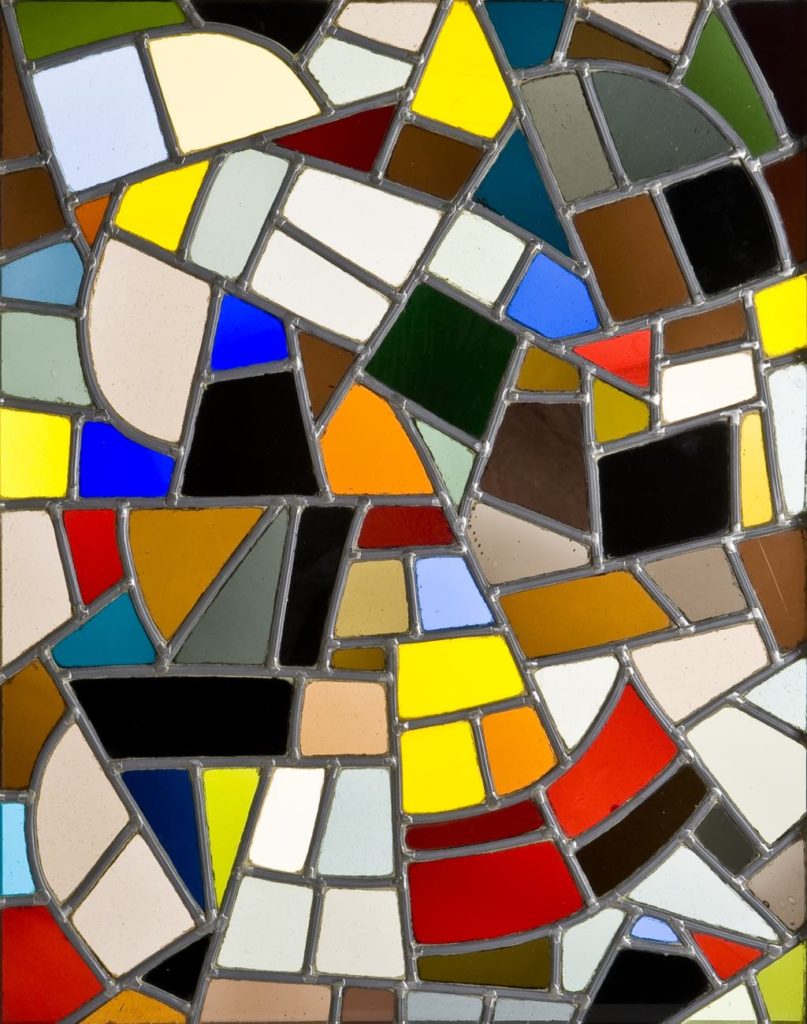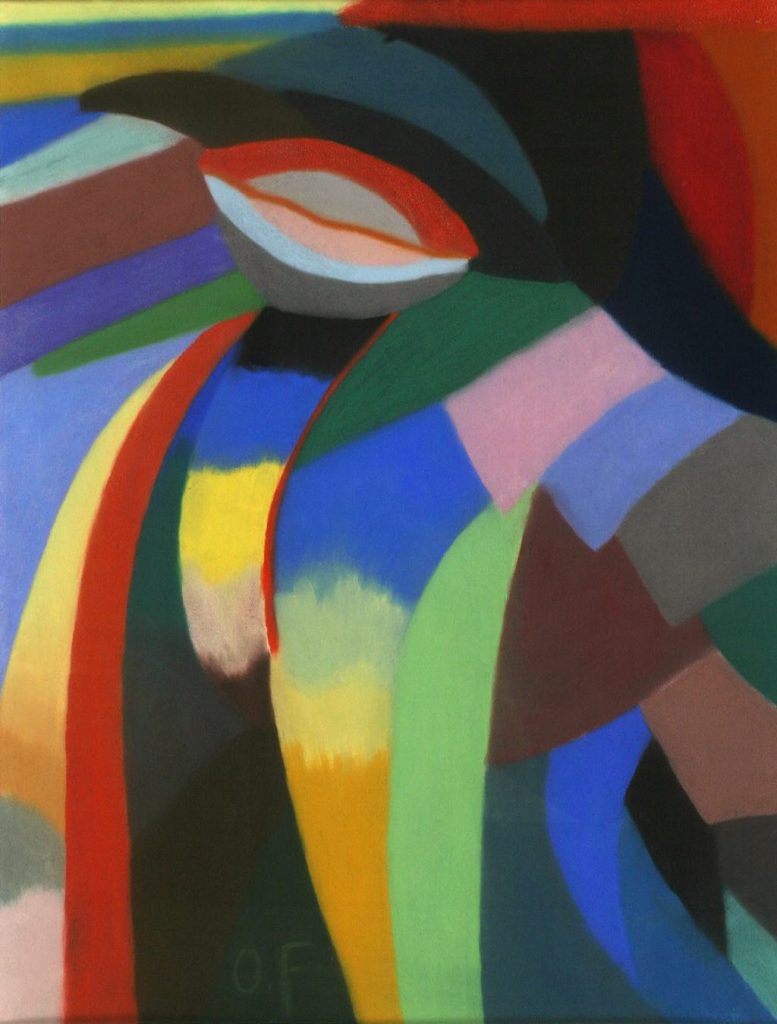
Imagine that you are an artist arriving in Paris for the first time in 1908. Right away, you are offered a studio in the Bateau Lavoir in Montmartre, where you immediately meet and befriend Pablo Picasso, followed by many of the then-struggling artists who would become legends of 20th-century art, among them Amedeo Modigliani, Georges Braque, André Derain and Robert Delaunay.
You might infer from that enchanted beginning that the German-Jewish artist Otto Freundlich (1878-1943) – the subject of the current exhibition (the first on his work since 1969) at the Musée de Montmartre – led a charmed life. Alas, it was not to be so. Freundlich, devoted to his artwork, lived in poverty for much of his life and was picked up by the Gestapo in 1943 and sent to a death camp in Poland, where he was murdered on the very day he arrived.
In spite of his troubles, Freundlich apparently remained optimistic through it all and was a kind, generous man lauded by his friends and acquaintances for his “altruism and extraordinary goodness,” as the French poet Géo-Charles put it. He went on to say that the artist was “a hero, a lay saint.”

Freundlich was not just a saint, however; he was also a fine artist who pushed forward the cause of abstraction at the beginning of the 20th century. The early works in the exhibition show him moving toward abstraction while retaining some figurative elements in his work. In 1941, when he discovered that the Nazis had destroyed some of his early works as “degenerate art” in the 1930s, he recreated some of them from memory. Two examples are present here, including “Composition with Three Figures,” originally painted in 1911, in which the three simplified, faceless figures are surrounded by swirling planes of color.
His move away from figuration was gradual, as it was for many of the other pioneers of abstraction at the time, among them Wassily Kandinsky and Paul Klee. Although he rejected Cubism as such, he was a great admirer of the work of Paul Cézanne, who constructed his paintings with planes of color rather than line or shading. Freundlich’s later paintings are likewise built only of blocks of color but, unlike Cézanne’s, with no figurative references.

His approach was influenced by and well-suited to the creation of stained glass, which he studied for five months in the restoration workshop in Chartres in 1914, an experience that “marked him for life,” during which he decided that “decomposition” was more interesting than “composition.” The show includes some beautiful examples of his stained-glass work.

The brutality of World War I awakened Freundlich’s spiritual side and inspired special arrangements of the fragments of color in his paintings, which often focused on the “cosmic eye,” as in “Composition” (1919), pictured here. The exhibition also illustrates how architectural forms like the half-ogive and geometric shapes, which appear regularly in his works, were related to his spiritual inclination; he had been impressed at Chartres by the spiritual symbolism of the cathedral’s architecture. As he once put it, “Every line drawn by the hand is a symbol, a path, a bridge from [the artist] to the outside world.”
Recognition and increasing prosperity came to the artist only in the 1930s, but with the advent of World War II, his time was limited. He was at first interned in various camps in France as an enemy alien and, after the arrival of the Germans, went into hiding in the Pyrenees in 1942. Many of his artist friends came to his aid, but to no avail. Like Anne Frank, he was turned in by an informant and shipped off to the camps, betrayed by his faith in the cosmic powers of art but still a believer.
Favorite
Toujours un bonheur d’aller dans ce Musée de Montmartre. L’exposition de Otto Freundlich est très bien documentée.
Très belle exposition, peintures, dessins et vitraux.